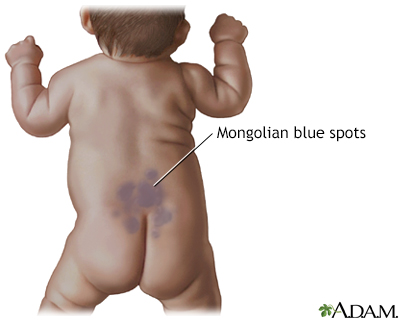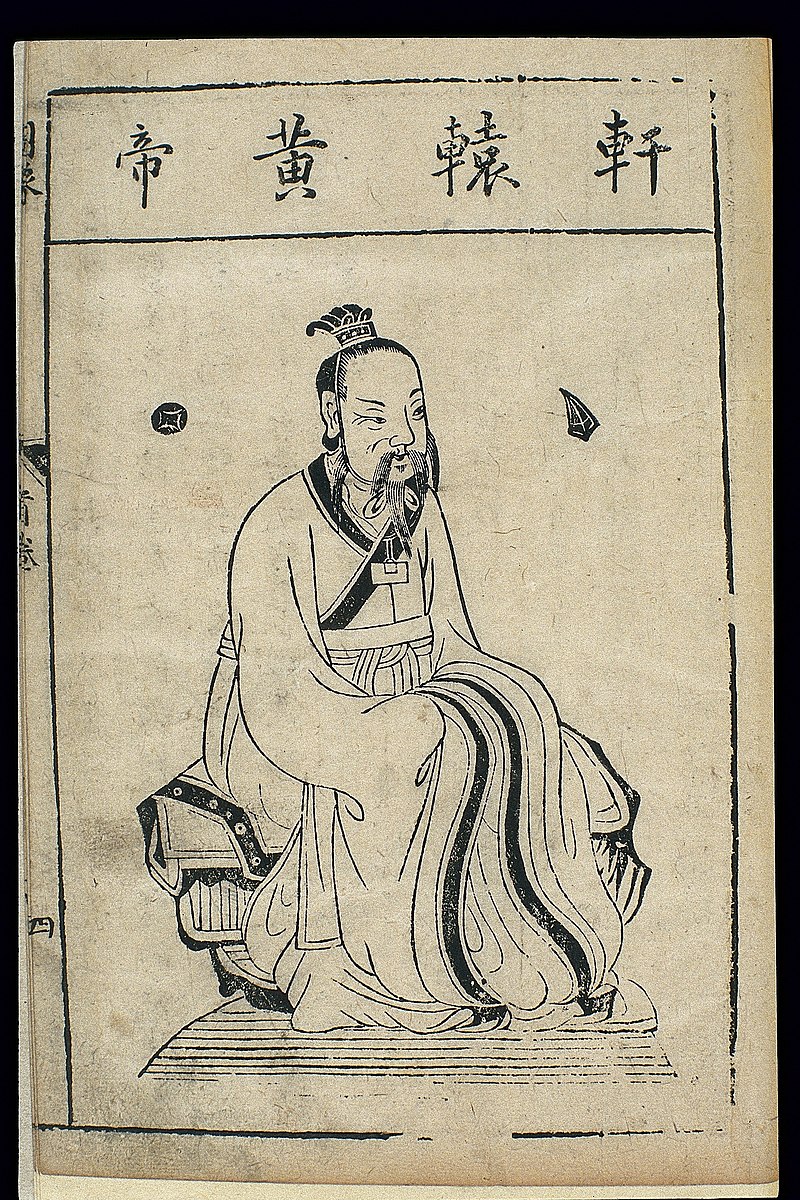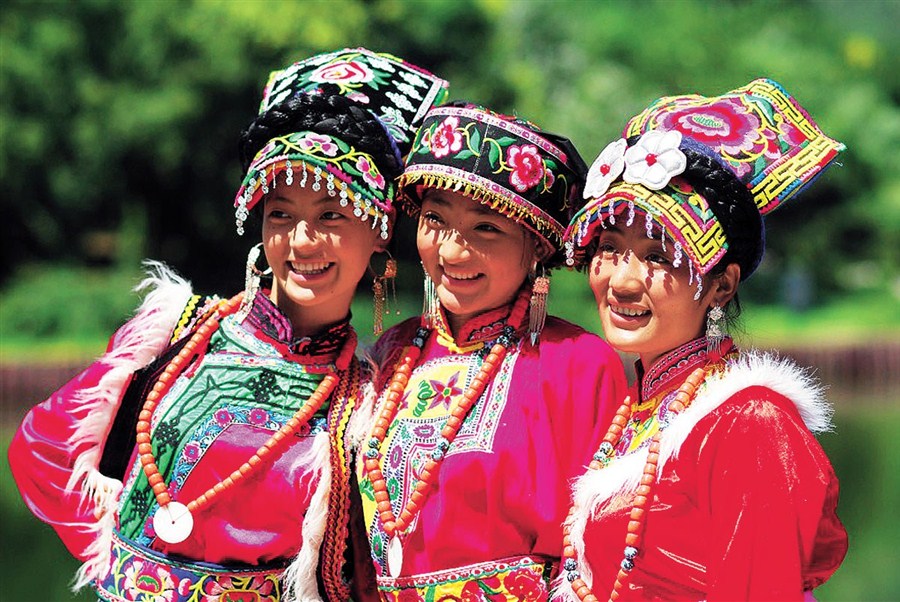And I wanted to ask again why the women in our family have a split nail on our left little toe. Whenever we asked our parents about it, they would glance at each other, embarrassed. I think I’ve heard one of them say, “She didn’t get away.” I made up that we are descended from an ancestress who stubbed her toe and fell when running from a rapist. I wanted to ask my mother if I had guessed right.
Maxine Hong-Kingston, The Woman Warrior
I remember sitting in bed at night reading this passage from Maxine Hong-Kingston’s “The Woman Warrior” a month ago and realizing with a jolt that I knew exactly what she was talking about. Overcome with excitement, I shouted “I have this! THIS!!” all the while swatting at my bewildered husband with the phone I was reading my kindle book from.
I had never heard of split pinky toenails mentioned before in any context up to this point. I thought it was just some weird, annoying thing my mom and I both have. Yet here, in this book, was someone specifically mentioning others having it and in terms of ancestral folklore!
Did having a “split nail” on one’s pinky toe mean something profound? Is this an Asian thing I was a part of? Burning with curiosity, I started to dig, wondering what I would find.
What is it?
Split pinky toenail, also known as “double toenail, crocus toenail, compound toenail, accessory toenail, or sixth toenail” happens when there’s a little “split” or nub of excess formation that veers off from the main nail area. Degrees in separation of the wayward “accessory” range from itty bits to the split of nearly half of the nail itself.

Theories on the causes of this anomaly range from malnourishment, childhood accidents, pressure on the foot during birth, and the wearing of uncomfortable shoes (everything from steel-toed work boots to women’s high heels). The most common reasoning has to do with genetics (hereditary dysplasia).

Initially, split pinky toes used to be thought of as uncommon and historically associated with the Han Chinese, the dominant ethnic group in China (out of 56!). Around a quarter of Koreans are said to have it and link the trait to being of Mongolian descent. However, unlike the blue “Mongolian Spot,” which studies haven proven to occur in higher instances in Asians, there is no data to support the split pinky toe as distinctively a Han genetic trait. There is data to show that the oddity occurs globally.

A study by German Prof. Dr. Eckart Haneke, published in 2016 by the National Center for Biotechnology Information, reviewed thirteen years’ worth of photos of patients’ feet from his dermatology clinic. Among his 58 patients, he found evidence that “patients with double little toenails were seen in all countries visited, irrespective of skin complexion and race.” The patients came from all backgrounds (Mexican, German, Norwegian, Turkish, etc), with only one being of Han Chinese descent. Dr. Haneke concluded that this “double accessory” was in fact a common attribute although undiagnosed in many and rarely reported. He theorized most people will never seek consultation on it, but, like me, just deal. Some, however, do seek surgical relief in more painful instances.
In addition, any look into a basic search engine will pull up forums showing people from all over the world share this idiosyncrasy. Therefore, my main question is if split pinky toes are a common characteristic among other nations and races, then why do some Han Chinese feel strongly possessive about it?
Origin Stories of the “Han Toenail”
I found two specific legends from Chinese history cited repeatedly by Chinese netizens. While there are other variations, these two tales seemed to be the most prevalent. Much like the passage I mentioned earlier from Maxine Hong-Kingston’s book, each legend centers on the violence of forced relocation and the subsequent inter-generational trauma; both of which ultimately manifest as symbolic “double petal nails” (关于小脚趾两瓣趾甲的传说) on the pinky toes of their descendants.
1. The Qiang Nomads’ Wronged Ancestress

During the reign of Huangdi 黃帝, the mythical Yellow Emporer (2697–2598 BCE, not to be confused with actual Emperor Qinshihuangdi 秦始皇帝 221-10 BCE), only two types of people were said to reside in what is now considered China: the established Henan folk, descendants of the Yellow Emperor, and the nomadic Qiang. The Henan people prospered greatly, farming the fertile plains within the heart of the country (the cradle of Chinese civilization) and developing extensive cities.
The Qiang, on the other hand, were shepherds, an ancient tribe now considered to be the founders of the modern Qiang and Tibetan people. They were said to have been descended from the Yan Emperor, the mythical “Flame Emperor,” that was previously defeated by the Henan people’s Yellow Emperor.

This brutal story tells of how cruel ruler Yin Wang of the Henan people led an attack on the Qiang. They abducted a beautiful Qiang woman, and when she tried to escape, Yin Wang stabbed her in her stomach.
This Qiang woman later gave birth to two children with “scars” on their smallest toes. Yin Wang had the children adopted into Henan society. The children’s descendants would forever continue to bear the scars of this poor Qiang woman as “double nails” on their pinky toes.
2. The Hongtong Big Locust Tree Immigrants 洪洞大槐樹移民
“Who is under the ancient locust, check the nail shape of the little toes on both feet.” 一副是「誰是古槐底下人,雙足小趾驗甲形
Couplet found in the ancestor worship hall at Dahuaishu Park

The second, and most popular, legend I found on Chinese chat groups has to do with the involuntary relocation of the Han people from Shanxi Province to the Southeast, Central Plains and other then uninhabited regions during the Ming Dynasty (1368 to 1644 ACE).
During this era, China’s population plummeted after years of successive wars and famine. Zhu Yuanzhang, also known as Emperor Hongwu the founder of the Ming Dynasty, and his son, Zhu Di, decided to move vast numbers of Han Chinese from more densely populated areas to reclaim and rebuild land where the nation was lacking subjects.

Despite offering an immigration resettlement fee, most of the people were unwilling to emigrate. This story focuses on one particular batch of stubborn immigrants from Hongdong County in Shanxi. These unhappy villagers were amassed under the largest locust tree in town before setting off. The story takes two different turns after this point.

The first version holds that the government soldiers, fearing deserters en route, tied everyone up and slashed each person’s pinky toe for identification. Henceforth, all with inherited split pinky toenails are said to be the descendants of those immigrants.
The second version states the immigrants were so reluctant to leave their hometown, they cut gaps in their little toenails themselves. The reasoning being that they would never forget their hometown with this “double petal armor.” Furthermore, if there were cracks or splits on little toenails in the future, then they would all be able to recognize their Han kin one day under their beloved big locust tree.
This legend birthed a Shanxi folksong (listen to it here):
After crossing the Yellow River and uphill, 過了黃河上了坡,
Do not want to move one step three times. 一步三回不想挪。
Where are my ancestors? 問我祖先在哪裡?
Old stork nest under the big locust tree. 大槐樹下老鸛窩。
So where do people have toes? 那麼哪裡的人會有跰趾?
That’s right, Shanxi people are most likely to be lame. 沒錯,山西人最有可能是跰趾

A 2005 study by Bian Jianchao, an associate professor at the School of Public Health of Fudan University, attempted to quantify the genetic prevalence of “valvular nails” among the Chinese. They found that the closer people lived to Shanxi province, the greater the likelihood that they would have split pink toenails (see map below).

Shanxi (79.17%)
Henan (63.74%)
Zhejiang (62.54%)
Jiangsu (62.45%)
Fujian ( 37.80%)
Jiangxi (36.84%).
A sign of Pure-Blooded Han-ness?

Nope, definitely not. It’s neither a signal of the “High Ancestry Han” (高血汉族) wording I’ve seen thrown around to distinguish Han people from the so-called “inferior barbarians of the north,” nor is it even a marker of being Asian. As I mentioned earlier, while having split pinky toenails was once thought to be solely a Chinese trait, this claim is unsubstantiated as it’s found in people from all races and in all regions of the globe. Split pinky toenails seem to be just a benign, normal (albeit peculiar) genetic mutation.
It would be fascinating if someone did a study to see if different ethnic groups do have higher instances of it. In the meantime, I’ll continue to happily do away with mine whenever it reappears.
References
- Bradley Mayhew, Korina Miller, Alex English: South-West China. 2002. Northern Síchuan – Around Wénchuan, page 517.
- Chi CC, Wang SH. Inherited accessory nail of the fifth toe cured by surgical matricectomy. Dermatol Surg. 2004;30:1177–1179. [PubMed] [Google Scholar]
- Giger, Joyce Newman (2016). Transcultural Nursing – E-Book: Assessment and Intervention. Elsevier Health Sciences. p. 176. ISBN 978-0323400046. Retrieved 14 September 2017.
- Haneke E. Double nail of the fifth toes. Skin Appendage Disord. 2015;1:163–167. [PMC free article] [PubMed] [Google Scholar]
- Qian, Zhang (2014). “Qiang among China’s ancients”. archive.shine.cn. Retrieved 2020 Jul 30.
- Yaoxian (2017, Aug 17). 純正血統的漢人的小腳趾甲是分成兩瓣的」可信嗎?真正的漢族是. https://kknews.cc/history/m34n346.html Retrieved 2020 Jul 31.

I am a from Nepal a beautiful mountainious country situated in the lap of himalaya. I have a same trait as I have same nail condition in my right pinky toe nail. I am very happy to know more about this trait in different people around globe.
LikeLike
I have this too. I am Hispanic hispanic . I don’t know if my mother has it too. I do know that Twins run in my mother side of the family. My sister and I both have twins. But I haven’t asked if anyone else has the split pinky toenail. Although I look more like my father… I seem to have more of my mother genitic traits, disorders, etc.
LikeLike
Hi… This is very interesting, and i know I’m late. But I’ve had this for as long as I can remember… I am a black American female, born in DC, and I know my mom has it too. I don’t know if my sisters have it, and I don’t think any of my 3 children have it. It’s predominantly on my right foot, barely noticeable on my left… I have always tried to cut it down and cut around it, even deeply into the other side… it always comes back.
LikeLike
I am english and scottish ancestry and I have split pinky toenails on both feet. I always assumed I must have dropped something on my toes as a kid. Thanks for your blog.
LikeLike
My DNA is 💯 European (Scandinavian, Irish, English, Scottish) and I have the dreaded split pinky toe. Really only on right foot. Left is there but much less pronounced
LikeLike
My husband is Mexican and Spanish. I have been trying to figure out how to help him get rid of this . It only causes pain when it grows so big it catches on his pants . He is relieved that he isn’t strange and more people have this.
LikeLike
Aw, he’s definitely not alone! Sorry to hear that it’s causing him so much trouble. I usually cut mine off, but if it’s such a reoccurring pain I’d recommend going to see a podiatrist. I heard there’s a treatment common with ingrown nails that they can do – basically cut off just that part of the nail and stick an acid into the nail matrix to stop it from growing there in the future.
LikeLike
I’m of European descent primarily but I have this! Found this durning my search for answers lol
LikeLike
Hello, my name is Haney. I am a male with this trait. My mother, sister, her son, and all of my children have this trait. It is definitely a dominant trait in my mother’s family genetics as it is passed on to each child on both feet. My mother is Egyptian and her father is from Sudan. We are dark complected with African dominant genetics. My father was white American. He did not have this trait. In our family, it is most definitely a dominant trait. Each of my children were born with Mongolian spots that later disappeared. It didn’t matter what race or who my family line mixed with, the accessory toe nail or 6th toe nail trait is always present. We were always told that we were descendents of King Tut and his young bride who went into hiding after his untimely death. It could just be family folklore as no proof exists. I find it funny that my name is Haney and I am almost 40 years old and just now take the time to read about it. I find it interesting that it is believed to be a trait of the Han people. I love the story of the Yellow Emporer and the story of the people of the Locust Tree. Who knows, maybe we are of this lineage somewhere down the line or maybe the Han people are the descendents of King Tut and his unfortunate, young, widowed bride.
LikeLiked by 1 person
That is fascinating!! I love that your family passed down this story through the generations. I haven’t heard of it being linked to King Tut, but I wouldn’t be surprised if he had it. Thanks so much Haney for sharing!
LikeLike
you have teochew blood lines, thats where split pinky toes came from.
LikeLike
Ah, that’s cool to think so, but that doesn’t explain how it’s common in other races. 🙂 There definitely needs to be more study into it.
LikeLike
I’m a Mexican woman and have this on my right toe! It’s so frustrating when it keeps getting caught in my clothing and bedsheets. I’m pretty sure I ended up passing this down to my son
LikeLike
Terrific work! This is the type of information that should be shared around the web. Shame on Google for not positioning this post higher! Come on over and visit my web site . Thanks =)
LikeLike
I have this problem and when I mentioned it to a podiatrist, they told me it’s caused by fungus. But I don’t believe this to be true because there are none of the traditional symptoms of fungus or appearance. That’s why a google search led me here, I’m shocked to find so many people have this! I didn’t know it was “thing” much less that there is all this historical background about it, so interesting! Thank you for your post. And – I am Mexican. And first noticed the split nail after a long night of dancing in high heels that were too tight on the pinky toe
LikeLiked by 1 person
I’m glad you found my post useful! It is such a weirdly fascinating topic that affects so many people. 🙂
LikeLike
I had to read this, as I definitely have a split pinky nail. I always heard of this as being a Han Chinese thing. I didn’t know other ethnicities had it too! Super interesting post!
LikeLiked by 1 person
It’s really neat, right? I didn’t expect it to be as common a thing as it is among non-Han Chinese people.
LikeLike